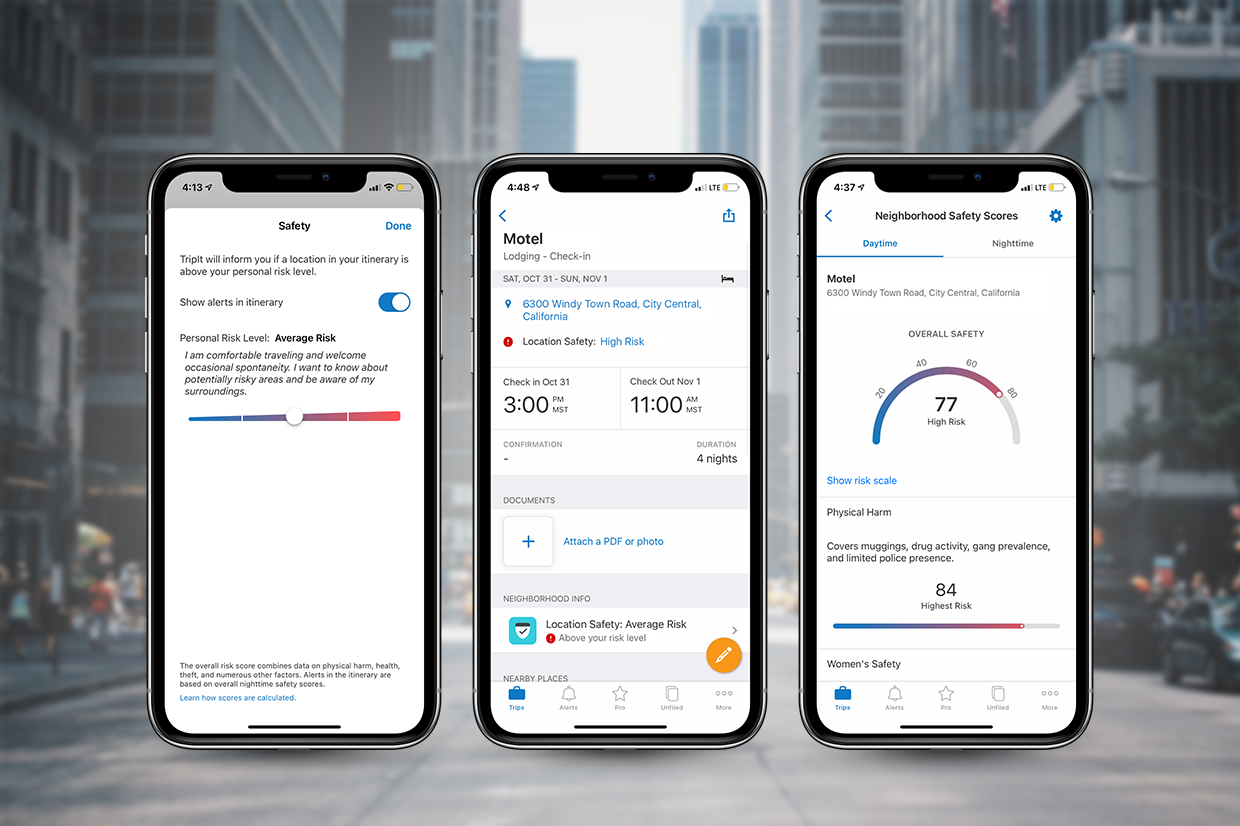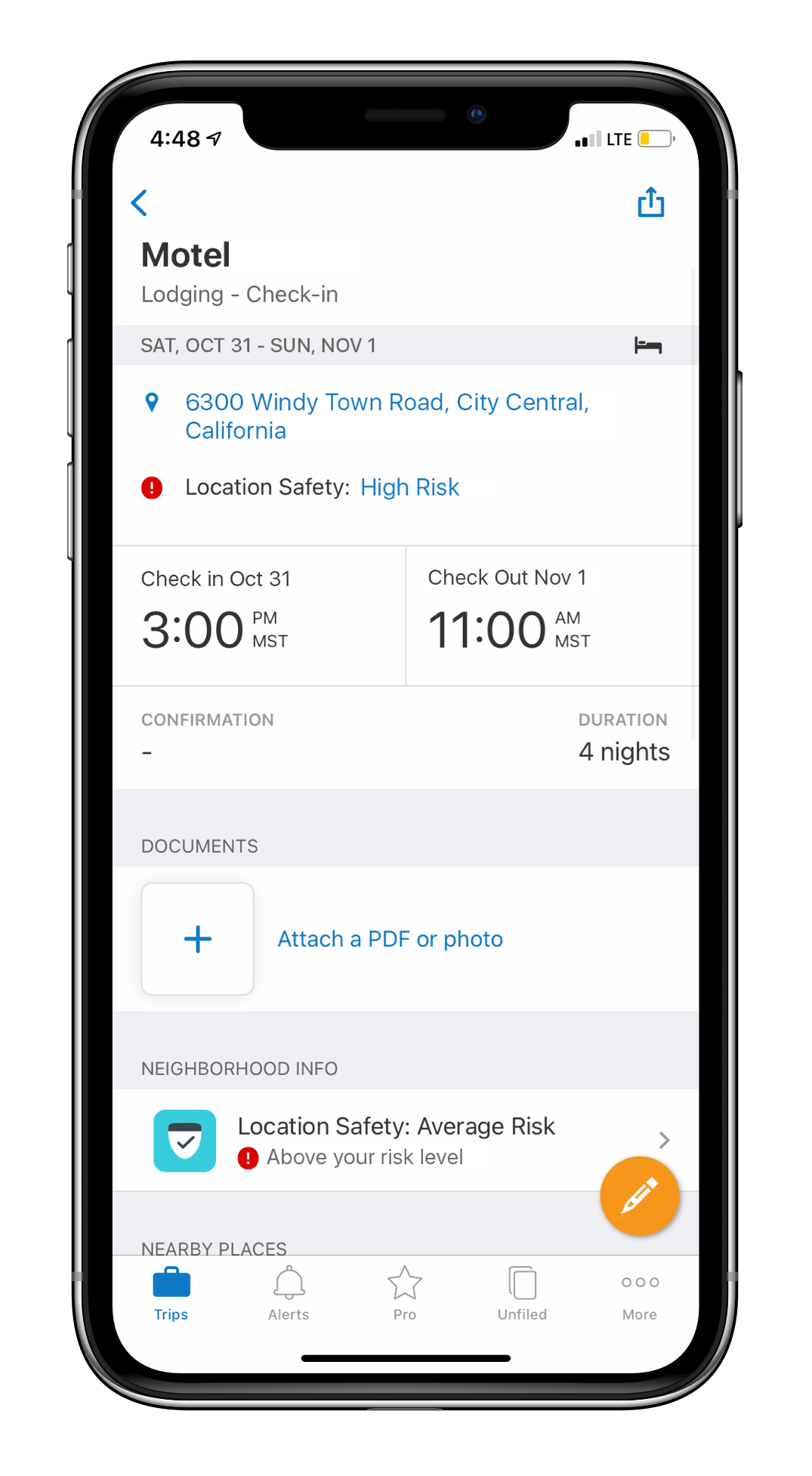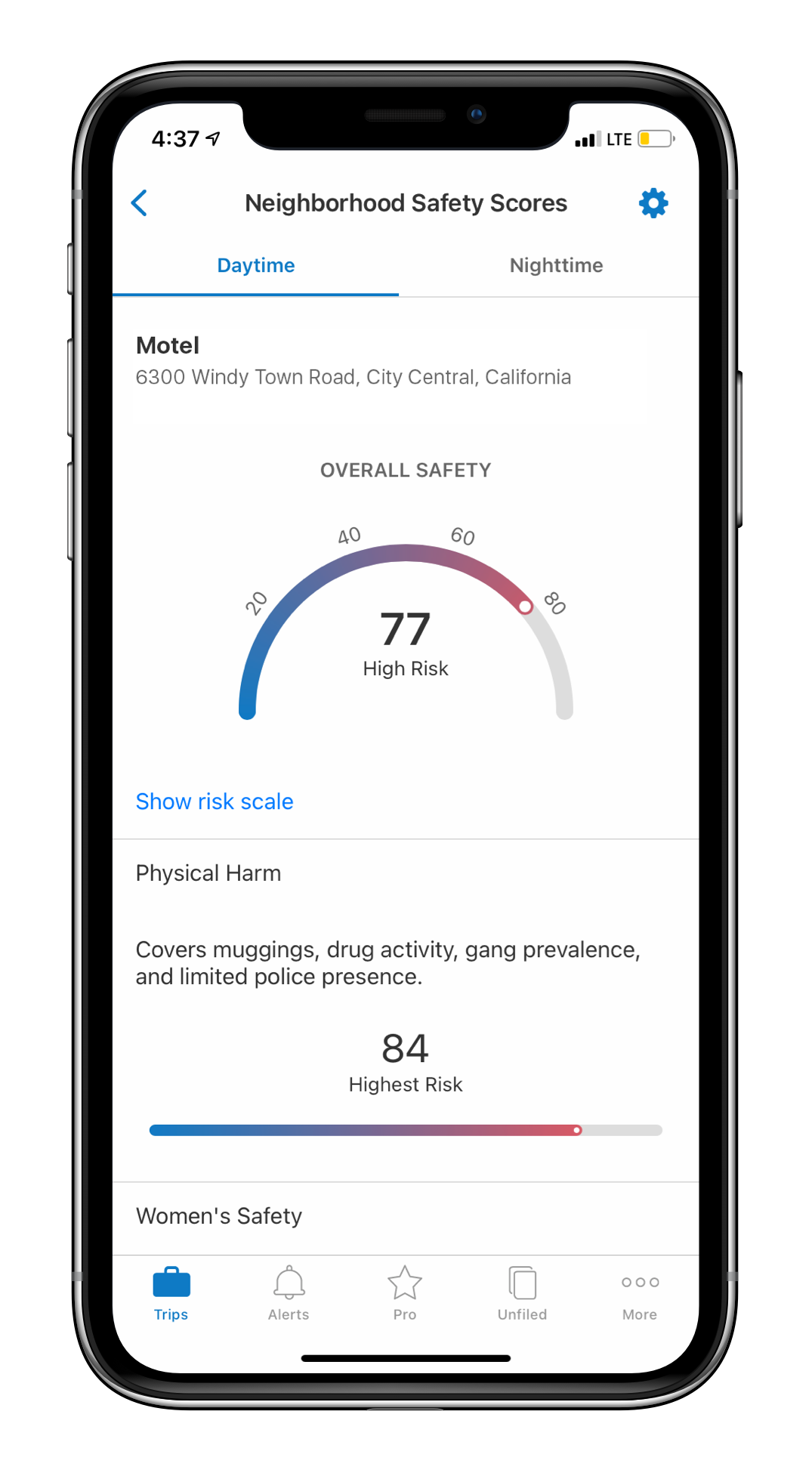
We know everyone has a different comfort level when they travel. Some travelers head out solo, while others prefer the company of a tour group. To help you make the best decisions for you as you travel, and to better understand the areas in which you’re traveling, you can now set a personal risk level within the Neighborhood Safety Scores feature from TripIt. Then, we’ll warn you if you’re planning on visiting an area that exceeds your threshold.

How does a personal risk level help keep travelers informed?
When you set your personal risk level in TripIt, we’ll flag any plan with a safety score that’s above your threshold. For instance, if you’ve booked a dinner reservation in an unknown neighborhood, you can check the TripIt app to see if that area is above your risk level at night. Armed with this information, you might opt to take a cab there instead of walking.
Or, you might have booked a hotel in an area that exceeds your risk threshold. Knowing this before your trip, you can plan to only explore the area (by day) with a buddy—and share your trip itinerary with your Inner Circle, too.
By setting a personal risk level with Neighborhood Safety Scores in TripIt, you’ll be better prepared to make decisions that allow you to travel in a manner that makes you most comfortable.
How do I set a personal risk level?
First, open your TripIt app. In the new Safety section within Profile, you can set a personal risk level. You can also access the personalization screen from the Neighborhood Safety Scores feature in the app.

When a plan’s location is above the personal risk level that you’ve set, you’ll see an indicator on the plan in your trip summary, as well as in the detail screen of that plan.
How do I choose my personal risk level?
From personal security to health and safety, there are many factors to consider when you travel. Here’s a guide to help you choose which personal risk level fits you best:
- Lowest risk: I am extremely cautious about traveling, especially anywhere new and unfamiliar.
- Low risk: I prefer to keep to well-known neighborhoods. I like to plan ahead of time, so I can take the necessary precautions.
- Average risk: I am comfortable traveling and welcome occasional spontaneity. I want to know about potentially risky areas and be aware of my surroundings.
- High risk: I am a confident traveler. I may visit some higher-risk areas if I know in advance and set my expectations accordingly.
- Highest risk: I understand travel may involve risk and adversity. I want to be informed only in the most extreme circumstances.
About Neighborhood Safety Scores
TripIt shows safety scores from 1 to 100, representing low to high risk, including a Health and Medical score that factors in COVID-19 data. This information is available in the Neighborhood Safety Scores section within your TripIt itinerary.
TripIt provides hyperlocal safety scores for neighborhoods around the world. A composite score represents the overall risk for a location. The scores are also broken down into categories, such as:
- Overall safety: objective measure of the safety quality at a location reflecting a average of the sub-categories below
- Health and medical: environmental pollution and contamination, illnesses, regulation of sanitary conditions, and access to medical care
- Physical harm: including muggings, drug activity, gang prevalence, and police presence
- Women’s safety: including verbal harassment, physical assault, violence directed against women, and adequacy of women’s support facilities
- Political freedoms: including political unrest, limited political rights, and incidences of riots and protests
- Theft: including petty theft, pickpocketing, burglaries, auto theft, and grand theft
- LGBTQ safety: including likelihood of harm or discrimination against LGBTQ persons or groups and level of caution required at location
Separate scores are available for daytime and nighttime. Travelers can find safety scores for their lodging, restaurant, and activity locations within the Android, iOS, and Mac app.
Neighborhood Safety Scores are powered by our partner GeoSure, which analyzes metadata captured from hundreds of trusted sources to determine destination safety. This data includes statistics from the World Health Organization, Interpol, Centers for Disease Control and Prevention, country and city crime statistics, and more. GeoSure also takes into account user reports about on-the-ground safety conditions. Through its proprietary algorithm combines hundreds of variables specific to each neighborhood, GeoSure produces standardized, customized safety metrics.
As the travel landscape continues to evolve, TripIt is here to provide you with as much information as possible so you can make the best decisions for your trip.



